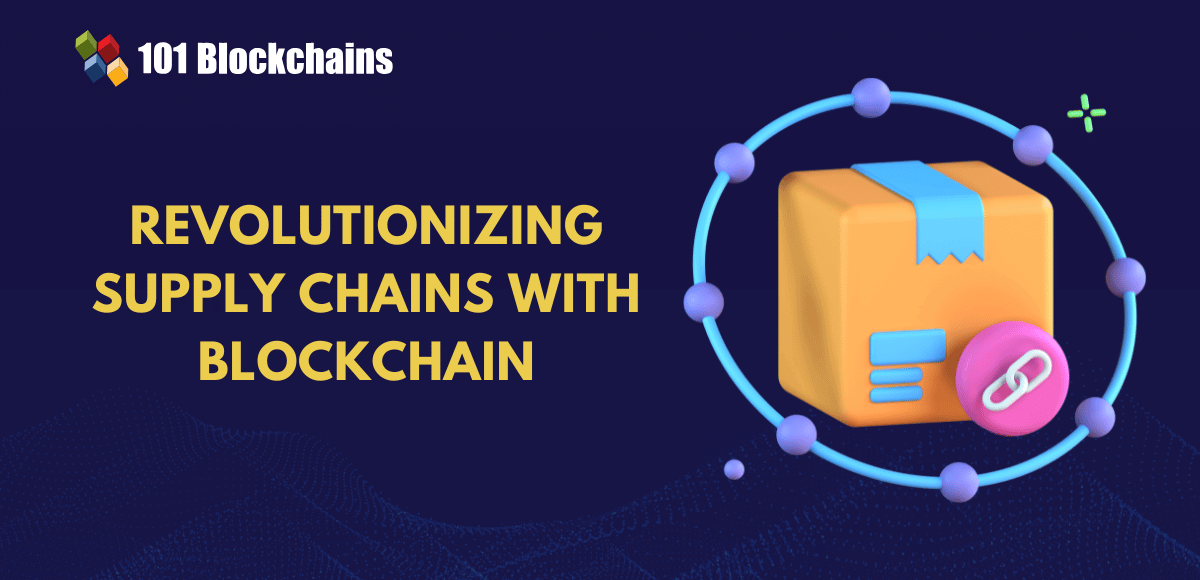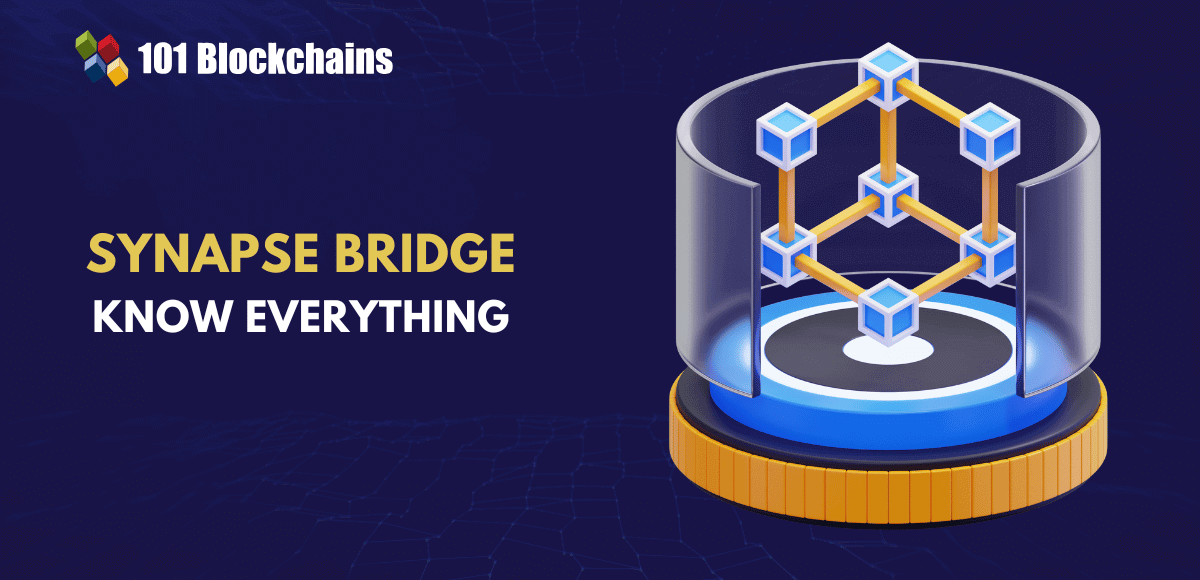Learn how blockchain truly works, master key definitions, and uncover what makes smart contracts so "smart." Dive into the fundamentals, gain valuable insights, and start your blockchain journey today!

- Blockchain
Diego Geroni
- on October 05, 2021
Blockchain Scalability Solutions – An Overview
In the previous article we have covered all about blockchain scalability problem and why it is difficult to scale blockchain. In the continuation of the topic, let’s learn about some of the best blockchain scalability solutions in this discussion.
Blockchain has established a stronghold in the domain of modern technology with profoundly increasing interest in research on distributed ledgers. The decentralized, distributed ledger technology aims to enable decentralized transaction management. Therefore, any node could have the privilege of starting a transaction according to certain rules without the need for any third party to manage the transaction.
The wider adoption of blockchain has resulted in the intervention of blockchain-based applications in our daily lives. With the increasing number of users in blockchain systems, the growing issues of scalability call for introducing reliable blockchain scalability solutions. The following discussion offers you a detailed insight into the different possible solutions for addressing the blockchain scalability problem.
Build your identity as a certified blockchain expert with 101 Blockchains’ Blockchain Certifications designed to provide enhanced career prospects.
Why is Scalability Important for Blockchain?
Scalability is an important requirement in blockchain networks as it refers to the network’s ability for supporting higher transaction throughput. Therefore, scalability is highly essential for the future growth of blockchain. The growing number of use cases alongside the adoption of blockchain technology could not affect the performance of a perfectly scalable blockchain. Blockchains with reduced performance due to growing adoption could showcase the lack of scalability.
In addition, the problem of blockchain trilemma also indicates that achieving improved scalability would come at a cost of reduced security and decentralization. At the same time, it is also important to note that only scalability can help blockchain networks compete effectively with conventional, centralized platforms. So, is it possible to find solutions to scalability of blockchain which do not affect security and decentralization?
Enroll now in the Blockchain Scalability and Interoperability Mastery Course to learn the skills needed to develop faster, scalable, robust, and interoperable dApps.
Promising Solutions to Improve Blockchain Scalability
With scalability being one of the most prominent roadblocks for mainstream blockchain adoption, it is inevitable to find efficient blockchain scalability solutions. Presently, you can find different types of solutions under development for addressing the problem of blockchain scalability. Interestingly, you can find the solutions for blockchain scalability issues in four distinct categories. Each category of solutions offers unique propositions for solving the scalability challenges in the blockchain.
1. First Layer Scalability Solutions
The foremost answer for ‘how do you fix a scalability problem in the blockchain’ would take you to layer-1 solutions. The first layer or layer 1 solutions require changes in the codebase of the main blockchain network. Therefore, layer 1 solutions are also referred to as on-chain scaling solutions. Layer 1 solutions focus on improving the core features and traits of the blockchain network such as increasing block size limit or reducing the block verification time. The popular layer 1 blockchain scalability solutions include sharding, segregated witness (SEGWIT), and hard forking.
-
Sharding
Sharding is one of the notable on-chain scaling solutions. It focuses on dividing the blockchain network into smaller and easily manageable parts, known as shards. Then, the network would run the shards in parallel to each other. With each shard taking card of transaction processing in the group, the processing output would increase substantially across the network. Breaking down the network into smaller parts enables the network to function as the sum of its parts. Sharding basically removes the concerns of depending on the speed of individual nodes for faster and improved transaction throughput.
-
Segregated Witness
Segregated Witness or SEGWIT is also another notable addition among solutions to scalability of blockchain among first layer solutions. SEGWIT is basically a protocol improvement in the Bitcoin blockchain network, focused on modifying the manner and structure of data storage. It helps in the removal of signature data associated with each transaction, thereby opening up more capacity and space for storing transactions. It is important to note that the digital signature for verifying ownership and availability of the funds of the sender, takes around 70% of the whole space in a transaction. Removal of the digital signature could clear up more space for adding more transactions.
Want to become a bitcoin expert? Enroll Now in Getting Started with Bitcoin Technology Course
-
Hard Forks
Hard forking is a process that focuses on making structural or fundamental changes in the property of a blockchain network. For example, hard forking can involve increasing the block size or reducing the time required for creating a block. While hard forking is a basic requirement in the case of layer 1 blockchain scalability solutions, the most productive alternative is a contentious hard fork. The contentious hard fork basically implies a split in the broader blockchain community with a specific section of the community defying the core community on specific issues. In such cases, the specific section of a blockchain community can choose to implement structural changes in the underlying codebase.
2. Second Layer Scalability Solutions
The feasibility of the first-layer solutions or on-chain scaling solutions depends a lot on modifications to the main blockchain network. However, research on finding answers to how do you fix a scalability problem in the blockchain network has led to the evolution of off-chain scaling solutions. The off-chain scaling solutions are the second layer or layer 2 scalability solutions. Layer 2 solutions are basically secondary protocols developed over the main blockchain. The secondary protocols would be places for ‘off-loading’ transactions from the main blockchain. As a result, layer 2 solutions can help considerably in addressing the issues of space and network congestion. The common examples of second-layer solutions are evident in the form of state channels as well as off-side-chains.
-
State Channels
State channels are one of the common additions among layer 2 solutions to scalability of blockchain. State channels offer two-way communication between off-chain transaction channels and blockchain networks through different mechanisms. As a result, it can ensure prolific improvements in transaction speed and capacity. It is important to note that state channels do not require the immediate involvement of miners for validating transactions. On the contrary, state channels serve as resources close to the network, integrated with the help of a smart contract or multi-signature mechanism. Upon completion of a transaction or group of transactions on a state channel, the concerned blockchain documents the final ‘state’ of the ‘channel’ alongside all associated transitions.
Some of the notable examples of state channels as blockchain scalability solutions include the Raiden Network of Ethereum, the Liquid Network, Bitcoin Lightning, and Celer. However, state channels tradeoff a certain level of decentralization for improved scalability.
Excited to learn the basic and advanced concepts of ethereum technology? Enroll Now in The Complete Ethereum Technology Course
-
Sidechains
Sidechains are also one of the top choices among layer 2 solutions for finding out how to fix a scalability problem in the blockchain of your choice. Sidechain actually serves as a transactional chain adjacent to the blockchain, especially in the case of large batch transactions. Sidechains leverage independent consensus algorithms in comparison to the original chain. Interestingly, the independent consensus mechanisms offer possibilities for optimization to achieve improved scalability and speed. Sidechains generally use utility tokens in the mechanisms for transferring data between the sidechain and main chains. In this case, the important role of the mainchain would focus on the maintenance of general security alongside facilitating dispute resolution. It is also important to note that sidechains are prominently distinguishable from state channels in various ways.
You should notice that sidechain transactions do not hold the value of privacy between participants as they are publicly documented on the ledger. In addition, security breaches in sidechains do not affect the main chain or the other sidechains. However, it is also important to note that you would need considerable effort for setting up the sidechain as you have to work from scratch.
-
Plasma
Plasma is also one of the notable blockchain scalability solutions in the layer 2 scaling solutions category. It basically focuses on using child chains that start from the original blockchain, with each child chain serving as an independent blockchain. The child chains process their own transactions while leveraging the benefits of security in the associated main chain. The independent operation of each child chain in parallel to each other provides the ideal opportunity for optimizing speed and efficiency. Furthermore, the child chains could have their specific set of traits and rules. So, you can create plasma for use cases involving the processing of a particular category of transactions while ensuring execution in a similar ecosystem with higher security.
-
Lightning Network
The Lightning Network is also a notable example among off-chain solutions to scalability of blockchain. It focuses on leveraging smart contract functionalities over the main blockchain network in private, off-chain channels. The off-chain channels could offer faster transactions with limited fees. Most importantly, Lightning Network enables the reduction of the load of the main blockchain by moving transactions away from the mainchain. As a result, users don’t have to incur the trouble of mining fees or wait for longer times for block confirmation.
3. Scalable Consensus Mechanisms
Your search for answers to ‘how do you fix a scalability problem in the blockchain’ would also take you to scalable consensus mechanisms. You can find different consensus mechanisms tailored for streamlining the process for achieving consensus. As a result, scalable consensus mechanisms could offer improved scalability and transaction throughput. Some of the notable examples of scalable consensus mechanisms which can serve productive blockchain scalability solutions include the following.
-
Delegated Proof-of-Stake
Delegated Proof-of-Stake or DPOS refers to the consensus mechanism which bears similarity to the democratic process of running a country. In this case, token holders get to select validators for transactions on the network. The number of delegated validators could range from 10 to 100 according to the system and it changes periodically. Token holders could easily vote out the underperforming validators or the ones with malicious intent against the system. Therefore, DPOS serves as a collaborative consensus mechanism in comparison to competing mechanisms such as Proof-of-Work or Proof-of-Stake. In the case of DPOS, delegates are responsible for working together to ensure the production of blocks. Despite the partial centralization of DPOS, the DPOS blockchain networks have better speed than conventional public blockchain networks.
Here’s a detailed guide to understand the features and comparison of public vs private blockchain.
-
Proof-of-Authority
You could also opt for Proof-of-Authority as another prolific entry among blockchain scalability solutions. It is a scalable consensus mechanism that actually offers a reputation-based consensus algorithm. The selected nodes take on the responsibility of validating transactions in the network with the Proof-of-Authority consensus mechanism. The nodes work as system administrators, with capabilities for dictating the state of transactions on the blockchain. Participants have to stake their identities in the case of a Proof-of-Authority-based blockchain system. Therefore, the Proof-of-Authority mechanism implies the need for a comprehensive and stringent screening process to select validators. The identity-based model and higher throughput in Proof-of-Authority make it suitable for private, permissioned blockchain systems.
-
Byzantine Fault Tolerance
Byzantine Fault Tolerance or BFT consensus mechanisms have been one of the trusted instruments for addressing the Byzantine Generals Problem. BFT basically points out to the feature of a distributed system which implies the need for achieving consensus constantly, despite the presence of many adversarial agents in the network. You can discover many variants of Byzantine Fault Tolerance algorithms as helpful solutions to scalability of blockchain.
The three distinct variants of the BFT consensus mechanism include practical BFT, federated BFT, and delegated BFT –
- Practical Byzantine Fault Tolerance
Practical BFT basically offers a high-performance variant of the Byzantine Fault Tolerance algorithm. It can support massive volumes of computational work while bringing only slight improvements in latency. It basically serves as an asynchronous system featuring one primary node alongside backup nodes communicating constantly with each other.
- Federated Byzantine Agreement
Federated BFT or Federated Byzantine Agreement (FBA) basically refers to a BFT variant that emphasizes reaching consensus through quorum slices and quorums. Quorum points out the number of nodes required for achieving consensus in a system. The quorum in turn contains collections of quorum slices, which consist of more than 2 nodes. Another interesting trait in FBA refers to the accuracy and updates of the public ledger of transactions without a consensus majority. On the contrary, FBA focuses on defining quorum through the individual choices of all nodes associated with the quorum slices.
- Delegated Byzantine Fault Tolerance
Delegated BFT or DBFT is also one of the prolific blockchain scalability solutions with many productive real-life implementations. DBFT is basically a BFT variant focused on the division of nodes into two different forms such as ordinary nodes and bookkeeping nodes, also referred to as delegates. The DBFT consensus mechanism operates just like the democratic process in a country. Token holders and ordinary nodes could vote for delegates, who are randomly selected for verification and validation of transactions.
We have an Insightful webinar session on DeFi And The Future Of Finance Enroll now to watch this on-demand webinar.
4. Scalable Distributed Ledgers
Blockchain technology is just one of the subsets in the broader distributed ledger technology or DLT landscape. In addition to blockchain, you can also discover other types of distributed ledgers. The interesting fact is that such types of distributed ledgers does not follow the same data structure as blockchain for organizing information into a sequence of chains of blocks.
The most prolific example of a scalable distributed ledger as solutions to scalability of blockchain refers to Directed Acyclic Graphs or DAGs. Directed Acyclic Graphs or DAGs operate asynchronously thereby implying possibilities for independent operation of transactions. DAGs leverage a linear data structure that allows the flow of data from previous to later sections. As a result, DAGs could enable the processing of the practically unlimited number of transactions.
Start learning Blockchain with World’s first Blockchain Career Paths with quality resources tailored by industry experts Now!
Final Words
The continuously growing demand for blockchain applications has led to prominent issues in scalability. More users and more transactions could congest a blockchain network and restrict its capability to process transactions. While there are many potential factors to affect blockchain scalability, the wide variety of blockchain scalability solutions provide much-needed relief. The different types of blockchain scaling solutions in different categories such as layer 1 solutions, layer 2 solutions, scalable consensus mechanisms, and DAGs offer effective solutions to blockchain scalability challenges.
However, it is also important to note that most of the scalability solutions are in the initial stages of development. In the long run, the efficiency of scalability solutions in practical use cases would influence the mainstream adoption of blockchain.
*Disclaimer: The article should not be taken as, and is not intended to provide any investment advice. Claims made in this article do not constitute investment advice and should not be taken as such. 101 Blockchains shall not be responsible for any loss sustained by any person who relies on this article. Do your own research!







